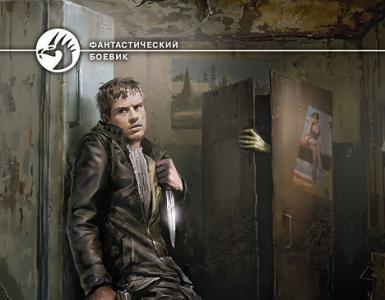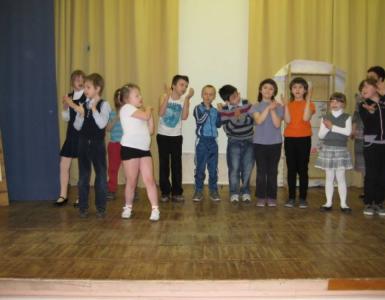Vasily Dmitrievich Polenov. One of the most significant phenomena in Russian painting of the second half of the 19th century is the work of Vasily Dmitrievich Polenov
Biography of V.S. Polenov
Vasily Polenov was born in St. Petersburg on May 20 (June 1), 1844 into an old noble family. Polenov's father, Dmitry Vasilyevich, was a famous historian, archaeologist and bibliographer. The artist's mother, Maria Alekseevna, was a children's writer and amateur artist.
Young years: Polenov’s vivid childhood impressions were trips to the north, to the Olonets region with its pristine nature, and to Olshanka, to the estate of his grandmother V.N. Voeikova. Vera Nikolaevna, the daughter of the famous architect N. A. Lvov, raised after the early death of her parents in the house of G. R. Derzhavin, was well versed in Russian history, knew folk poetry, and loved to tell her grandchildren Russian folk tales, epics, and legends. It was in this atmosphere that Polenov’s artistic taste was formed. Voeykova in every possible way developed her grandchildren’s passion for painting, encouraged creative ambition, organized competitions among children, awarding, as in academies, a “medal” for the best work.
The most gifted among the Polenov children were two: the eldest son Vasily and the youngest daughter Elena. Painting teachers from the Academy of Arts were hired for the children. The meeting with P.P. Chistyakov became fateful for Polenov’s talent. Chistyakov taught drawing and the basics of painting to Polenov and his sister in 1856-1861, while he was still a student at the Academy of Arts. From the very first classes, the teacher demanded that students closely study nature. In 1861-1863, Polenov studied at the Olonets gymnasium. In 1863, after graduating from high school, he entered, together with his brother Alexei, the Faculty of Physics and Mathematics of St. Petersburg University. In the evenings, Polenov visited the Academy of Arts; He studied not only in drawing classes: he also listened to lectures on anatomy, construction art, descriptive geometry, and the history of fine arts. Polenov was a regular visitor to the opera house and concerts. Soon Polenov became a regular student in the life class of the Academy of Arts. Then he temporarily left the university, completely immersing himself in painting. In 1867 he completed a student course at the Academy of Arts, receiving silver medals for drawings and sketches. Following this, he participated in two competitions for gold medals in his chosen class of historical painting. In January 1868 he resumed his studies at the university, now at the Faculty of Law. Polenov made his first trip abroad in the summer of 1867, visiting the Paris World Exhibition. The exhibition included a large section with works of folk art and craft from various countries. The unforgettable impressions of what he saw formed the basis of the dissertation that Polenov defended at the university.
Biography of V.S. Polenov
Creativity Review:
In 1869, for the painting “Job and His Friends,” Polenov received a small gold medal, and in 1871 (at the same time as Ilya Repin) for the competition work “Christ Raises the Daughter of Jairus” - a large gold medal.
Having simultaneously completed a university course at the Faculty of Law in 1872, Polenov went abroad as an academy pensioner. He visited Vienna, Munich, Venice, Florence and Naples, lived for a long time in Paris and painted there, among other things, the painting “The Arrest of the Countess d’Etremont”, which secured him the title of academician in 1876.
Having returned to Russia in the same 1876, he soon went to the Russian-Turkish War, during which he served as the official artist at the main apartment of the heir-cresarevich (later Emperor Alexander III).
Since the 1870s, Polenov worked a lot in the field of theatrical and decorative painting. In 1882-1895, the artist taught at the Moscow School of Painting, Sculpture and Architecture, where his students included I. I. Levitan, K. A. Korovin, I. S. Ostroukhov, A. E. Arkhipov, A. Ya. Golovin and E. M. Tatevosyan.
In 1877 Polenov settled in Moscow. A year later, at the VI traveling exhibition, Polenov shows the painting “Moscow Courtyard”, which later became his signature painting, painted from life in an Arbat lane. After her resounding success, the artist becomes the founder of a new genre - the “intimate landscape”. Since 1879 he was a member of the Association of Traveling Art Exhibitions. He gains fame as a master of epic landscapes, which he then increases by settling on the Oka River and traveling to places associated with the cradle of Christianity.
In 1881-1882 he went on his first trip to the Middle East and to biblical places: Constantinople, Palestine, Syria and Egypt, from where he brought sketches and sketches for the large-scale canvas “Christ and the Sinner”, as well as other paintings painted in Polenov’s found in trip, a new style of writing for myself.
In 1883-1884 in Italy he continued to work on the painting “Christ and the Sinner”; in 1887 it was exhibited at the XVth exhibition of the Wanderers.
In 1888 he painted the painting “On Lake Tiberias (Gensaret).”
Photo archive
Vasily Polenov, 1897
Polenov's house in the village of Borke
M.A. Polenova, the artist’s mother, 1850s
In a workshop
Large and friendly Polenov family
S.I. Mamontov and
V.D. Polenov, 1890
Polenov writes a sketch in Tarusa
V.D Polenov
The estate and surroundings. Big house
The large house, built on a hilltop above the Oka in 1892, still retains its original appearance. The house was created according to the designs of the artist himself: architecture was Polenov’s long-time passion. The house is wooden, three-story, with white walls (plastered in 1897), on a stone foundation. In the entire structure of the house one can feel that a talented architect and owner built it for himself, adapting every little detail to his tastes and habits; that the main attention was paid to the organization of life of a large family: it should not only live comfortably, but also work. As a creative person, this was one of the key moments for Polenov. The large house is asymmetrical: built on two levels. The facades of the house are different, but harmoniously connected with each other by windows of various sizes, balconies, and roof slopes.
The estate and surroundings. Portrait
The Portrait Room is the former Playing Room. Every Russian estate had such a room: in memory of loved ones, in memory of ancestors. Polenov creates such a room in the house after the death of his mother and younger sister Elena Dmitrievna
The estate and surroundings. Library
The library also has an art gallery. There are hundreds of books in the mahogany cabinets - on history and archeology, on Russian and Western art. Gold-embossed bindings of the dictionaries of Brockhaus and Efron and the Garnet brothers; collections of Greek and Latin authors: for example, eight volumes of Homer’s Iliad in French, multi-volume works by Walter Scott, Racine, Moliere - this is the approximate composition of this library, lovingly collected over many years. In the small collection of Western European art, the most expensive for Polenov was Paolo Veronese’s sketch of the biblical story “Jacob’s Struggle with God,” brought from Italy by the Russian poet V. A. Zhukovsky and presented to the poet by him. I. Kozlov, from whose relatives Polenov bought this work. Veronese was one of Vasily Dmitrievich’s favorite artists. Here is also the work of Frank Franken “The Exaltation of the Holy Cross” (17th century), with which Polenov’s great-grandfather laid the foundation for the family collection of paintings.
The estate and surroundings. Dining room and office Manor and surroundings. Staircase, workshop and landscape
Abbey
During Polenov's lifetime, the Abbey was his favorite place of work and recreation. Vasily Dmitrievich lived in the Abbey in the summer, setting up a small room for himself there. Being a very unpretentious person in everyday life, he limited himself to little: the entire furnishings of the room consisted of a simple wooden bed, a stool with washing accessories and a carpentry workbench.
Half-timbered
Currently, an exhibition hall has been created in the half-timbered barn, where exhibitions from the museum’s funds are held, related to significant events in the life and work of representatives of the Polenov family and the life of the estate.
About the museum
For more than 100 years, a three-story white house has stood on a high hill above the Oka River. Its architecture is unique and original. This house was built in 1892 according to Vasily's design. In 1890, the desired purchase of land in the village of Bekhovo was made. But Polenov liked most of all the high hill above the Oka, which bore the beautiful name “Borok”. This land was owned by a peasant community that did not have the right to sell the land, so an exchange was made: on June 8, 1891, Polenov received Borok, and the peasants received twice as much arable land. At a time when Russian estates are falling into disrepair, the artist creates a grandiose project for an estate complex. On August 16, 1891, the foundation stone for the house was laid, and on September 30, the walls began to be erected. And already on October 2, 1892, the family moved to a new house; this date is considered to be the day the museum was created. D. Polenova is one of the largest museum-reserves in the country and one of the most famous in Russia and abroad
Paintings by V.S. Polenov
Village Okulova Gora
Portrait of V. N. Voeikova, the artist’s grandmother
Portrait of E.E. Perova, the artist's wife
Corner of a medieval city with a wall
Resurrection of Jairus' Daughter
Paintings by V.S. Polenov
Winter in Rome
Crossing the Oyat River. From the mill
Birches and ferns
Abbey in Redon
Master's right
White horse. Normandy
Normandy coast
In the park. The town of Veul in Normandy
Pond in Woehle
Paintings by V.S. Polenov
Mill at the source of the river Woel
Low tide. Wöhl
Fishing boat. Etretat. Normandy
Portrait of V. D. Khrushcheva, the artist’s sister
Prodigal son
Feast of the Prodigal Son
Montenegrin
Italian landscape
Paintings by V.S. Polenov
Odalisque
Cityscape
Arrest of the Huguenot Jacobin de Montebel, Countess d'Etremont
Epic storyteller Nikita Bogdanov
Horse Mishka
Searches
Blagoveshchensky cathedral. The chapel of the Cathedral of the Blessed Virgin Mary at the head
Paintings by V.S. Polenov
Assumption Cathedral. South Gate
Terem Palace
Park in Olshanka
Pond in the park. Olshanka
Dining room in the dugout. Brestovets
Road near the village
Moscow courtyard
Moscow courtyard
Grandmother's garden
Overgrown pond
Paintings by V.S. Polenov
Portrait of the artist Ilya Repin
Winter. Imochenians
Birch alley in Abramtsevo
On the boat. Abramtsevo
Bouquet of flowers
Old mill
Burnt Forest
Paintings by V.S. Polenov
Nile near Karnak
Nile at the Theban Range
Vorya River
Parthenon. Temple of Athena Parthenos
Lake Tiberias (Genisaret)
Erechtheion. Portico of the Caryatids
Olive in the Garden of Gethsemane
Church of St. Elena. Chapel of the Church of the Holy Sepulcher
Paintings by V.S. Polenov
Portrait of N.V. Yakunchikova
S. I. Mamonov and P. A. Spiro at the piano
Behind old Cairo
Spring of the Virgin Mary in Nazareth
Mosque of Omar. Haram El Sherif
Constantinople. Eski-Saray Garden
Temple of Isis on the island of Philae
Baalbek. Ruins of the Temple of Jupiter and the Temple of the Sun
Baalbek
Dead Sea
Paintings by V.S. Polenov
Pier in Port Said
At the foot of Mount Hermon
Haram Ash-Sherif, where the ancient Jerusalem temple was located
View of Jerusalem from the west. Jaffa Gate and Citadel
Hall in a magic castle
Staircase to the castle
Ruins of Tiberias
River valley in Bulgaria
Killed soldier. Near the village of Mechki
Paintings by V.S. Polenov
The main apartment of the commander of the Rushchuk detachment in Brestovets
Soldier with a bundle of firewood
Village Turgenevo
Oyat River
Christ and the Sinner
On Lake Tiberias (Gensaret)
Klyazma River. Zhukovka
Landscape with a river
Paintings by V.S. Polenov
Russian village
Constantinople. Golden Horn
Autumn in Abramtsevo
Oka in summer
Early snow
Early snow. Bekhovo
Early snow. Bekhovo
Golden autumn
Paintings by V.S. Polenov
Chapel on the banks of the Oka
It's getting cold. Autumn on the Oka River near Tarusa
Venice. Channels
Venice. Pipes
Lagoon. Venice
Paintings by V.S. Polenov
Winter landscape. Bekhovo
Quarry
Gorge among rocky mountains
Cemetery among cypress trees
Menu: EE tttt aaaa pppp yyyy zzzz nnn iiiiii OO t t t t vvvv oooo rrrrr hhhh eee ssss ttt vvv eee GG aaaallll eee rrrrr eee yayyy sh sh sh sh eee dddd eee vvv rrrrr ooooo in FF oooo tttt oooo yyyy rrrrr aaaa ffff iiiii iiii i and i a aa aa bbbb tttt ooooo pppp ooooh rrrrr ttt rrrrr eee ttt yyyy OO bbbb aa aa bbbb ttt ooooo rrrrr eee BB yyyy xxxxx ooooo dddd

The work of Vasily Dmitrievich Polenov is one of the most significant phenomena in Russian painting of the second half of the 19th century. A remarkable landscape painter, he developed plein air painting systems in Russian art, creating works full of poetry and lyricism, beauty and truthfulness, and freshness of painting. The artist’s multifaceted creativity was not limited to achievements in the field of landscape genre. A painter and theater artist, an architect and a musician, he revealed his talent in each of the genres and types of art, and in many respects acted as an innovator... About creativity

Stages of life 1844 (June 1) born in St. Petersburg into a family of hereditary nobles Takes drawing and painting lessons from P.P. Chistyakova Moves with her parents to Petrozavodsk, studies at the gymnasium Enters simultaneously the Faculty of Physics and Mathematics of St. Petersburg University and the Academy of Arts - 1876 Pensioner business trip Marries Natalya Vasilyevna Yakunchikova () Member of the Committee for the creation of the Museum of Fine Arts named after Emperor Alexander III 1903 Performs church project for the village of Bekhovo 1926 Polenov was awarded the title of People's Artist of the Republic (July 18) Died in Borka. He was buried in the cemetery in Böchow.











Canvas » 43.5x30 cm Genre: » Religious subject Technique: » Oil Museum » State Russian Museum, St. Petersburg To the gallery To the gallery Martha took Him into her home(s)

Canvas » 29.8x43.3 cm Genre: » Landscape Technique: » Oil Museum » State Tretyakov Gallery, Moscow To the gallery To the galleryParthenon. Temple of Athena Parthenos ()
















